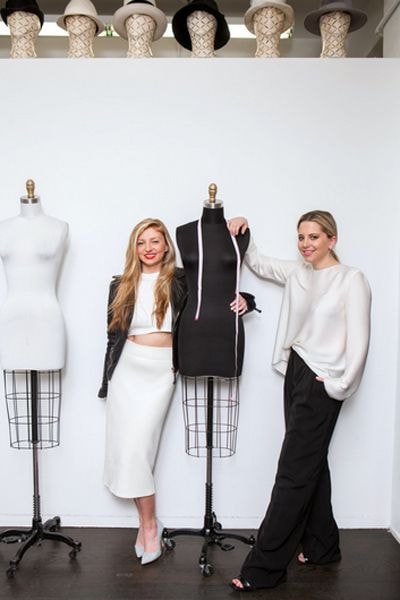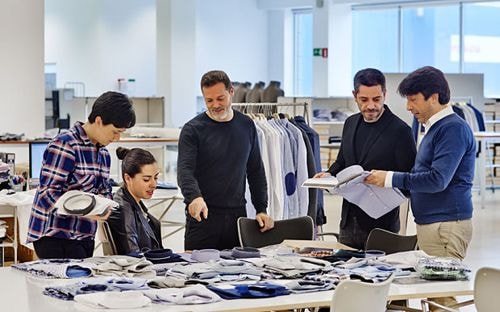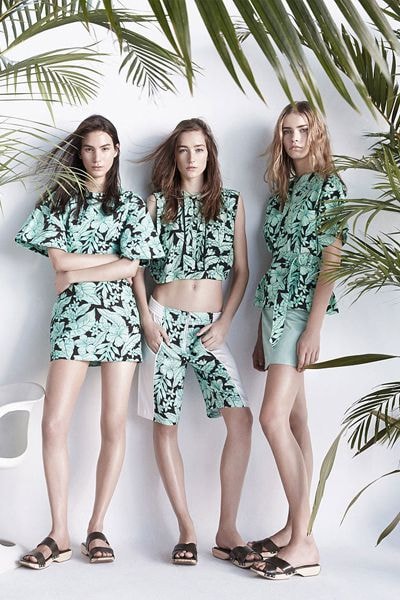Why Zara's affordable clothes make customers crazy
Spanish fashion brand with style reminiscent of high-end fashion houses like Celine, Balenciaga, good quality but price up to 10 times cheaper.
According to the recently updated rankings of Forbes in October, the owner of the Zara fashion empire - billionaire Amancio Ortega Gaon - has just become the richest person in the world with a fortune worth 80.3 billion USD, surpassing Bill Gates - founder of Microsoft - who owns 78.1 billion USD. If only mentioning personal reputation, Amancio Ortega Gaon is probably unfamiliar to many people. This is easy to explain because the 79-year-old billionaire rarely cares about press interviews and is not interested in appearing at public parties. However, just mentioning the affordable fashion brand he founded, the public all say "Ah!" because the name Zara has been a phenomenon in the world fashion scene in recent years.
Forbes said that in the 2014 fiscal year (ending January 31, 2015), Zara was the company with the leading growth in the low-cost fashion industry. The Spanish brand achieved sales of 19.7 billion USD, closely chasing its rival H&M with 20.2 billion USD. Following these two companies are Uniqlo with 16.6 billion USD, Gap with 16.4 billion USD, Primark with 7.5 billion USD, Abercrombie & Fitch with 3.7 billion USD and Mango with 2.1 billion USD. Each collection of Zara when launched makes customers wait and search, not inferior to expensive branded items. This makes many people wonder: Why is a popular brand like Zara so powerful in the fashion world?
 |
| Zara's low prices have even captivated fashion insiders like Lindsay Carr and Yael Quint, two staff members at the Albright Fashion Library in New York. Photo: Nytimes. |
Cheap price, good quality, updated trends
Lindsay Carr and Yael Quint are employees of the Albright Fashion Library, New York City's "fashion treasure trove" of more than 20,000 outfits and accessories, and a popular destination for stylists, editors, and Hollywood stars who need to rent high-end clothes for magazine shoots, advertising, or film. Lindsay Carr and Yael Quint's jobs allow them to buy designer clothes at low prices anytime, but lately, their choices have been limited to Zara products.
"The stylists who come here always ask me, 'Are you wearing Celine, or Givenchy?' We say, 'No, it's Zalenciaga, it's Zeline,'" says Yael Quint. Zalenciaga and Zeline are the girls' play on words, combining the names of luxury brands with Zara.
According to experts, Zara "scores points" thanks to its minimalist design, inspired by high-end fashion houses such as Jil Sander or Celine. In addition, the prices the company offers to customers are quite attractive. For example, a faux suede jacket for women costs about 70 USD (more than 1.5 million VND) while a navy blazer with gold-plated buttons is 140 USD (about 3.1 million VND). These numbers are nothing compared to similar designer models but often cost up to several thousand dollars. During the sale season, sometimes, Zara's clothes are only about 30 USD (about 670,000 VND). The materials used to make these clothes are considered to be quite good or better.
Some of Zara's products are even used by many celebrities such as Kate Middleton, Diane Kruger, Taylor Tomasi Hill, Gwyneth Paltrow and Amanda Brooks.
The brand’s clothes are also updated with the latest trends from the runway and red carpet. Instead of taking 5-7 months to order clothes, the brand forced suppliers to reduce the time it takes to get clothes to stores to two months. New clothes are completed and shipped to stores less than three weeks after being sketched on paper. This compares to the typical 30-60 day production time for most brands.
To cut down on "dead" time such as waiting for material supply, Zara chooses to take advantage of all available fabric sources to make clothes. In addition, the company accepts to pay to bring small quantities of clothing and accessory samples to stores, as long as they meet the needs of buyers. Sometimes, each Zara store only imports four to five samples for a design. That is the reason why the company's products are always at risk of "selling out". In fact, accessories are sold so quickly that most customers have to hesitate "Buy or not?" because of the fear that the product will no longer appear in the next shopping trip.
"If you go to see a Gucci or Chanel item in October, you can still buy it in February. But with Zara, if you don't buy it now, it won't be available for 11 days. It's either buy it or never own it again. And with prices so low, you have to buy it now," said Masoud Golsorkhi, editor of Tank, a style magazine.
 |
| Zara's design team is almost never mentioned in public. Photo: Nytimes. |
The company's philosophy of completely satisfying customers
Speed is considered the top criteria that creates advantages between low-end brands as well as high-end brands. Being quick to "copy" designs that have just appeared on the catwalk and red carpet at "affordable" prices helps these brands make a lot of money. As a pioneer in this movement, Zara cannot avoid fierce competition from rivals.
Nitin Passi, founder and CEO of budget brand Missguided, says a dress seen at a Hollywood event will be available on the brand’s website within five days. Whenever a new trend comes along, the brand tries to sell it in less than a week. The brand has been forced to reduce the frequency of new trends from once a day to once an hour.
However, Zara still has a smarter move. In addition to ensuring that it keeps up with trends, instead of trying to "copy" exactly the same outfits on the catwalk or at events, the Spanish company makes adjustments to serve customer needs. After the "copy" products are released, they are produced in small quantities for "customers" to try. Next, the company receives customer feedback on the system and sends it back to the headquarters in Arteixo (Spain) twice a week to complete the next production. Not only new products, even with the models being sold, the company continuously receives feedback and makes changes to please buyers. Every two weeks, Zara updates feedback from buyers.
Promote through stores and social media
Zara spends only about 0.3% of its revenue on media advertising. Therefore, images of gorgeous models wearing the brand's clothes rarely appear in newspapers or magazines. The information the company releases is mostly related to new store openings. Even the names of the designers who work for Zara are almost anonymous.
"The company doesn't want to talk about itself. We want customers to talk about us, not about how good the brand is, but about whether the products are worth the money," said the communications director of Inditex - the group that owns the Zara brand.
Therefore, Zara invests heavily in its stores to make their image ingrained in the minds of customers. The company owns a distribution network around the world with large stores, located on crowded streets or special locations with expensive rents and decorated no less than expensive brands. In 2011, Zara spent 324 million USD to buy land at 666 Fifth Avenue in New York (USA). This is considered one of the most expensive places to sell in Manhattan. Currently, Zara owns distribution channels around the world, with more than 1,900 stores in 87 countries, serving almost all ages.
"The strategy of high-end fashion houses is to distance themselves from brands like Zara. Zara tries to get as close as possible to them," says Masoud Golsorkhi. This helps the Spanish brand appear more like a true fashion house, rather than a company that specializes in "copying" products from the "big guys".
 |
| The minimalist design philosophy helps Zara's clothes feel like high-end brands like Celine or Balenciaga. Photo: Blogspot. |
When it comes to introducing new collections, the Spanish brand uses a much more economical method: social media, specifically Instagram. Experts say that Zara has been very quick to catch up with the trend of using mass media to promote products. With a current following of more than 6.2 million people, more than Adidas with 5.2 million people, every time it updates its outfits on social media, Zara has the opportunity to make a lot of money from the newly launched collection.
Kate Davidson Hudson, founder and CEO of Editorialist magazine, says that in the 1980s and 1990s, fashion was harder for consumers to access in the modern way. But now, people can see what’s happening on the runways right away through blogs and social media. “Everyone is a critic,” she says. “And consumers want to own new clothes as soon as they see them.”
According to VNE






